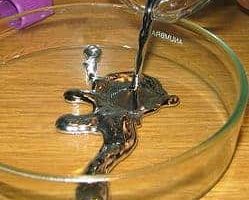national institute of environmental health sciences
NIH study finds 2 pesticides associated with Parkinson’s disease
New research shows a link between use of two pesticides, rotenone and paraquat, and Parkinson’s disease. People who used either pesticide developed Parkinson’s disease approximately 2.5 times more often than non-users.
The study was a collabora…
Succimer found ineffective for removing mercury
Succimer, a drug used for treating lead poisoning, does not effectively remove mercury from the body, according to research supported by the National Institutes of Health. Some families have turned to succimer as an alternative therapy for treating …
Gene limits learning and memory in mice
Deleting a certain gene in mice can make them smarter by unlocking a mysterious region of the brain considered to be relatively inflexible, scientists at Emory University School of Medicine have found.
Mice with a disabled RGS14 gene are able to r…
Atrazine causes prostate inflammation in male rats and delays puberty
A new study shows that male rats prenatally exposed to low doses of atrazine, a widely used herbicide, are more likely to develop prostate inflammation and to go through puberty later than non-exposed animals. The research adds to a growing body o…
Pesticide Use May Be Associated With Increased Risk of Prostate Cancer
Exposure to certain agricultural pesticides may be associated with an increased risk of prostate cancer among pesticide applicators, according to a large study looking at the causes of cancer and other diseases in the farming community. The study, part of a long-term study of pesticide applicators and their spouses known as the Agricultural Health Study (AHS), appears in the May 1, 2003, issue of the American Journal of Epidemiology*. The AHS is a collaborative effort involving the National Cancer Institute (NCI), the National Institute of Environmental Health Sciences, and the Environmental Protection Agency.
Low Lead Levels Linked with IQ Deficits
A new study suggests that lead may be harmful even at very low blood concentrations. The study, funded by the National Institute of Environmental Health Sciences of the National Institutes of Health, will appear in the April 17 edition of The New England Journal of Medicine. The five-year study found that children who have blood lead concentration lower than 10 micrograms per deciliter suffer intellectual impairment from the exposure.
Govt' to Investigate Environmental Health Threats to Children
A public meeting entitled “Children’s Environmental Health: Identifying and Preventing Environmental Threats to Children” will be held February 24-26, 2003 at the National Institutes of Health campus in Bethesda, Maryland. Children are not merely small adults, and can be exceptionally vulnerable to exposure from harmful toxicants. Exposures that may prove benign to an adult may have profound effects in an infant or child. To be held in the NIH’s Natcher Conference Center, the meeting is sponsored by the National Institute of Environmental Health Sciences, which is a part of NIH, an agency of the U.S. Department of Health and Human Services (DHHS).
U.S. Carcinogens Report Lists Estrogen Therapy, Ultraviolet, Wood Dust
The federal government today published its biennial Report on Carcinogens, adding steroidal estrogens used in estrogen replacement therapy and oral contraceptives to its official list of “known” human carcinogens. This and 15 other new listings bring the total of substances in the report, “known” or “reasonably anticipated” to pose a cancer risk, to 228. Among the other new additions: wood dust and ultraviolet light.




